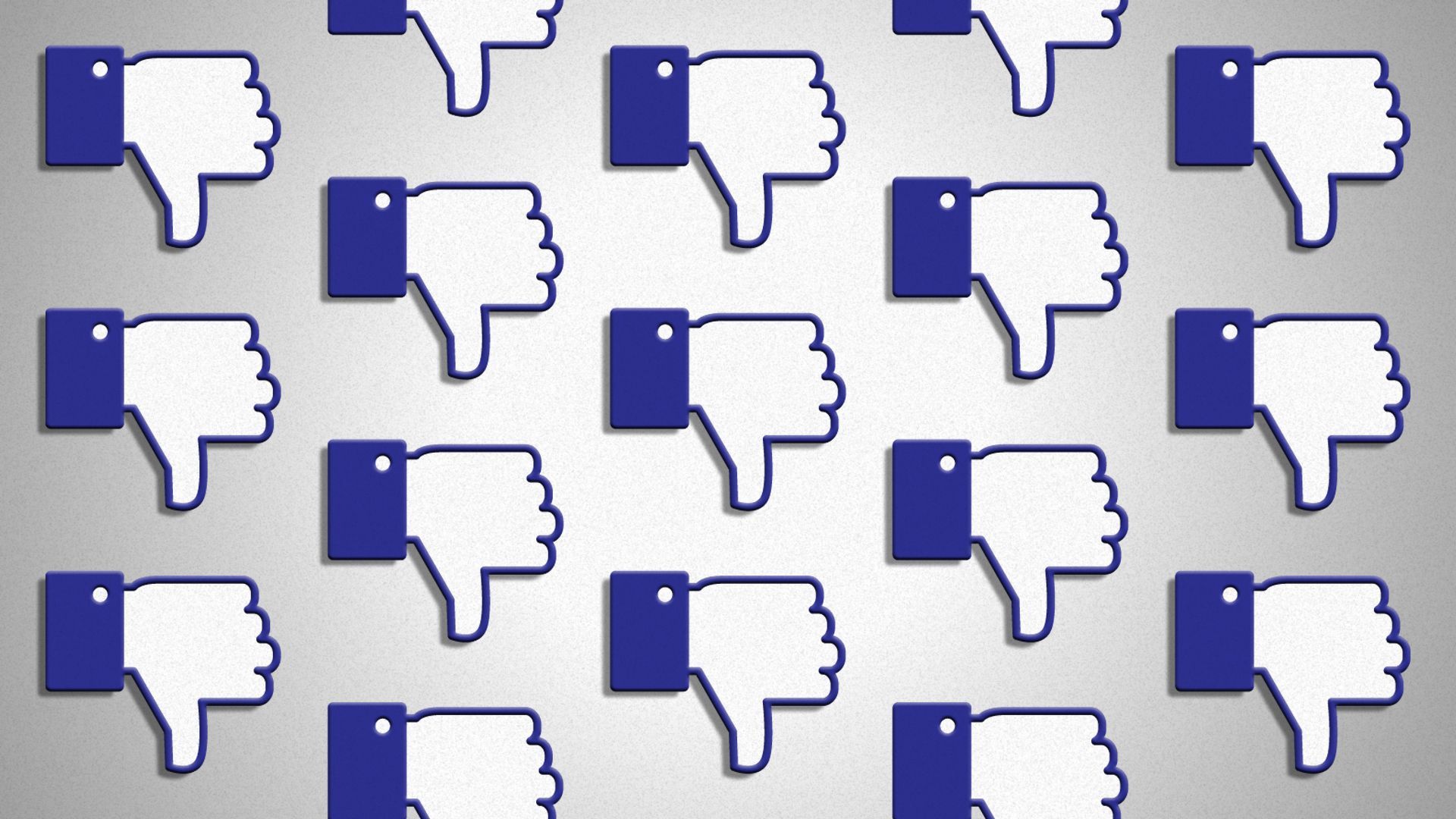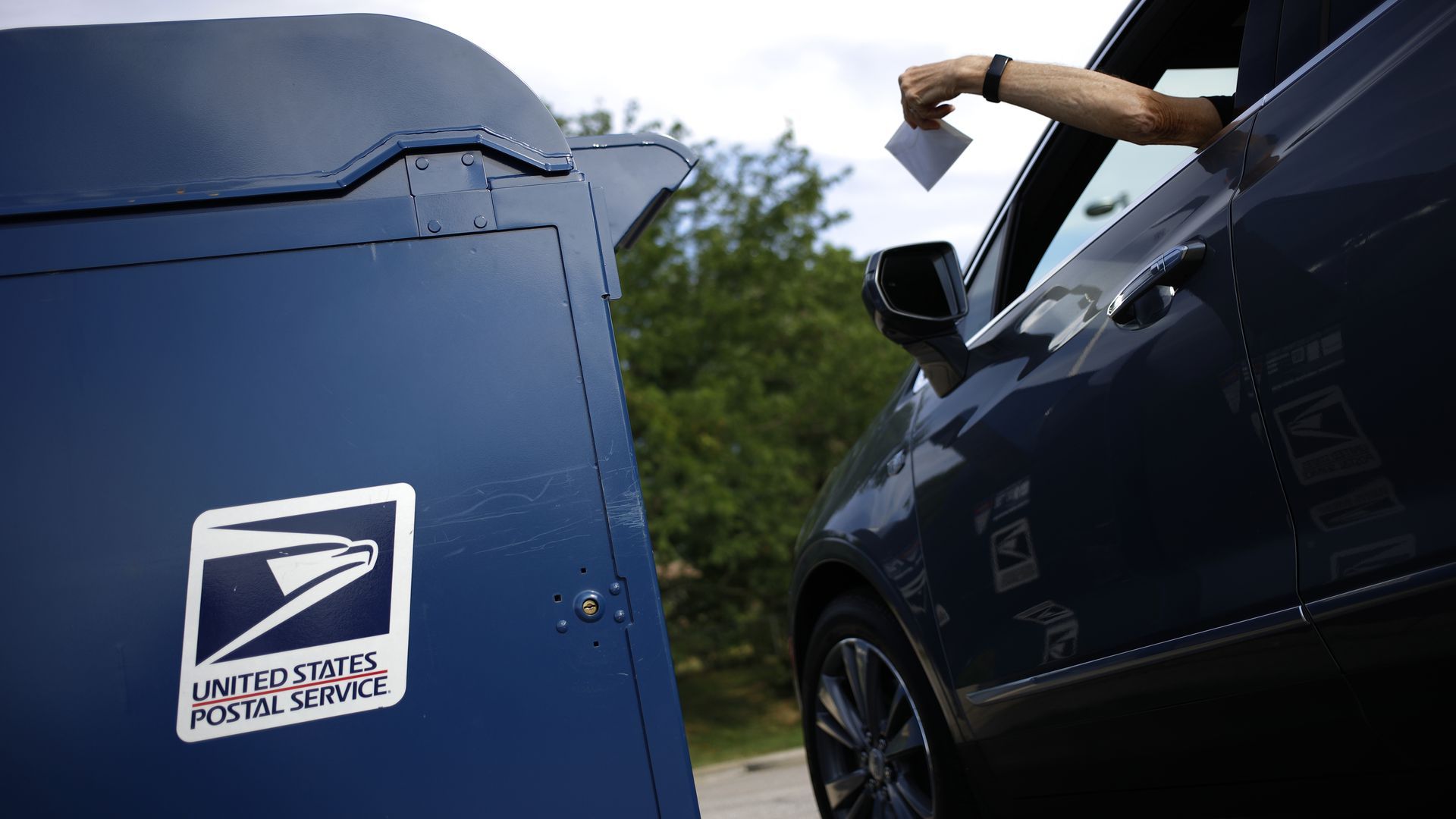| | | | | | | Presented By Robin Powered | | | | Axios What's Next | | By Alex Fitzpatrick, Jennifer A. Kingson and Joann Muller · Jul 12, 2022 | | Alex here. Remote work isn't dying off entirely — but it does appear to be settling into a kind of stasis, I found while reporting my story today. - Are you still working from home? Why or why not? Let us know at whatsnext@axios.com.
- Join Axios' Javier E. David, Erica Pandey and Niala Boodhoo today at 3:30 p.m. ET for a virtual event exploring the digitization of small business. Guests include SBA Administrator Isabel Casillas Guzman, 1863 Ventures founder and managing partner Melissa Bradley, and National Small Business Association president and CEO Todd McCracken. Register here.
Today's Smart Brevity count: 1,153 words ... 4½ minutes. | | | | | | 1 big thing: Remote work levels out |  Data: BLS; Chart: Baidi Wang/Axios The share of Americans working remotely because of COVID-19 is leveling off, Alex Fitzpatrick reports. Why it matters: The pandemic has been a once-in-a-lifetime chance for many people to reimagine their relationship with their jobs, unchaining them from the need to be at a particular desk under a particular set of fluorescent lights at a particular time every day. - WFH life opened new possibilities for people who couldn't relocate for work, or who struggle in office environments because of physical or mental disabilities.
By the numbers: Just 7.1% of American workers teleworked because of the pandemic in June, according to the Bureau of Labor Statistics' latest report, down from 15.4% in January. - That figure has been hovering around 7%-8% since April, suggesting we've hit an equilibrium point.
Remote work rates vary significantly based on industry. - A whopping 20% of "information" workers, 19.7% of those in finance/insurance, and 17.6% of those in "professional and technical services" worked from home last month, per BLS.
- Compare that to just 2.2% in construction, 2.7% in transportation and warehousing, and 3.6% in retail (obviously, all fields that don't have a ton of remote-friendly roles).
Yes, but: BLS tracks whether people are working from home specifically because of the pandemic. - People who worked remotely before the pandemic aren't included in the figures.
- Nor are people who started working remotely during the pandemic and came to love it, but may no longer consider COVID the primary factor keeping them home every day (hi!).
- Another report, from WFH Research, shows that people are working from home about 30% of the time — and, like the BLS data, that figure hasn't changed much in months.
The intrigue: Diehard return-to-office bosses have had trouble recalling workers in this hot labor market because people who want to stay remote have little trouble finding new, WFH-friendly gigs. - But the tables may turn at breakneck speed if there's a recession and workers suddenly find themselves hunting for a job, any job.
Of note: The latest COVID variants may scare people into staying home — slowing or reversing the back-to-the-office trend. Alex's thought bubble: I'm as big a work-from-home fan as you'll find, but even I miss office life sometimes for reasons both personal and professional. Ever try gathering 'round the watercooler with cats? They're not great conversationalists. The big picture: For many workers, remote work looks like it's here to stay — but early pandemic-era prognostications about the impending death of office life were greatly exaggerated. Share this story. |     | | | | | | 2. Lawmakers press Meta on abortion "censoring" |  | | | Illustration: Megan Robinson/Axios | | | | Sens. Amy Klobuchar (D-Minn.) and Elizabeth Warren (D-Mass.) have written to Meta leadership to press the company about reports it has been "censoring posts containing accurate information about abortion," according to a letter shared exclusively with Axios' Ashley Gold. Why it matters: Social media companies hold tremendous sway over the kinds of information available online. Driving the news: The two lawmakers wrote to Meta CEO Mark Zuckerberg and Instagram CEO Adam Mosseri on July 7. - They referred to various news reports that Facebook and Instagram have removed posts about legally obtaining abortion services, added "sensitivity screens" to posts, and suspended accounts sharing information about abortion access.
- They asked Zuckerberg and Mosseri to answer a number of questions about their company policies by July 15.
The other side: Some abortion-related posts were taken down due to improper application of Meta's policy against buying, selling, trading, gifting or requesting pharmaceuticals, company spokesman Andy Stone said last month. Our thought bubble: This is just the beginning of the challenges online platforms will face from all sides in moderating content related to reproductive health care, as many states move to restrict abortion. Read the rest. |     | | | | | | 3. TikTok's endless fast fashion machine |  | | | Illustration: Victoria Ellis/Axios | | | | The TikTok trend factory is fueling the rise and fall of new aesthetics (think "coastal grandmother," "mall goth" and "dark academia") that in turn feed into fast fashion mania, Axios' Anna Braz reports. Why it matters: The fast fashion industry thrives on rapid taste shifts, pumping out more and more cheap, low-quality clothes that will end up in landfills as new trends replace yesterday's styles. - 39% of Gen Z users were directly influenced to buy a product after seeing it on TikTok, per a Marketing Charts survey.
- Garment production grows by 2.7% annually, while 25% of garments go unsold and fewer than 1% are recycled into new duds, per a 2021 report.
Nil Sani, a 19-year-old lifestyle and fashion YouTuber, told Axios that apps like TikTok promote consumerism and fast fashion. - "Influencers make their audiences believe they need to purchase specific items in order to achieve their look," says Sani. "If you don't have this shirt, these socks, this mirror, this room decor, then you won't embody this aesthetic."
Zoom in: "Coastal grandmother" is the latest trend. - With a white linen button-down, a cashmere sweater tied around your neck, khaki capris and pearls, you too can live the coastal grandmother life.
- Coastal grandmothers exude sophistication — think Diane Keaton in "Something's Gotta Give" — while they enjoy leisurely beach walks or morning yoga in neutral tones and timeless jewelry.
What to watch: Some young people are resisting the all-consuming need to stay on-trend by embracing secondhand fashion. That's one perk of the coastal grandmother look, which consists of time-honored pieces that can be found in thrift stores — or a mom or grandmother's closet. Share this story. |     | | | | | | A message from Robin Powered | | Tech that connects hybrid teams | | |  | | | | Robin's step-by-step Hybrid Work 101 guide shares key ways to create a thriving hybrid workplace. It covers: - The tech you need to better connect your teams.
- How to adjust your office for flexible work.
- Leveraging data to assess your strategies.
Get the guide plus free planning templates. | | | | | | 4. The latest price hike? Stamps |  | | | The price of mailing a letter just went up. Photo: Luke Sharrett/Bloomberg via Getty Images | | | | The price of postage stamps went up by two cents this past weekend, Axios' Kelly Tyko reports. Why it matters: The U.S. Postal Service says its 6.5% price hike will help fund badly needed modernization efforts. By the numbers: Postage for a 1-ounce letter is now 60 cents, up from 58 cents. - Each additional ounce now costs another 24 cents, up from 20 cents.
- USPS is also seeking price adjustments for certified mail, P.O. box rentals and money orders.
Be smart: Stamp prices are expected to keep rising, so Forever stamps can insulate your wallet from future bumps. Share this story. |     | | | | | | 5. 🔥 Cool gear alert: A wood-free campfire |  | | | Photo courtesy Howl Campfires. | | | | Nothing says "summer" like a roaring campfire, yet wood-burning fires pose a significant wildfire risk — especially in the drought-prone American West, where burn bans can douse many a camper's hopes of hot dogs and s'mores. Yes, but: Outdoor gear startup Howl Campfires is working on an "artificial campfire" that uses propane, not wood, as its fuel source — complete with open flame. The details: "By unifying the [propane] cylinder and body, the solution turns an awkward combination of a round tank and a box on legs into a single stable cube about the size of two bundles of firewood," per Outside magazine. - Howl's gadget can be run on "full blast for about 7.5 hours," Outside reports, "which should give users two full evenings of use on a single tank."
- And it actually gets hot, unlike many propane fire pits.
What they're saying: "Our goal is to keep the campfire alive," Howl's Kelly Lund told Outside. What's next: Howl is targeting a late 2022 release for around $800. |     | | | | | | A message from Robin Powered | | Roll-out strategies to boost employee engagement | | |  | | | | Robin's step-by-step, actionable playbook helps hybrid work beginners better facilitate flexible work. What's in it for you: Learn to connect hybrid teams, increase engagement and leverage data. Plus, get free planning templates to create unique workplace strategies. Download the guide. | | | | A hearty thanks to What's Next copy editor Amy Stern. Was this email forwarded to you? Get your daily dose of What's Next magic by signing up here for our free newsletter. |  | | Are you a fan of this email format? It's called Smart Brevity®. Over 300 orgs use it — in a tool called Axios HQ — to drive productivity with clearer workplace communications. | | | | | | Axios thanks our partners for supporting our newsletters. If you're interested in advertising, learn more here.
Sponsorship has no influence on editorial content. Axios, 3100 Clarendon Blvd, Arlington VA 22201 | | | You received this email because you signed up for newsletters from Axios.
Change your preferences or unsubscribe here. | | | Was this email forwarded to you?
Sign up now to get Axios in your inbox. | | | | Follow Axios on social media:    | | | | | |










No comments:
Post a Comment